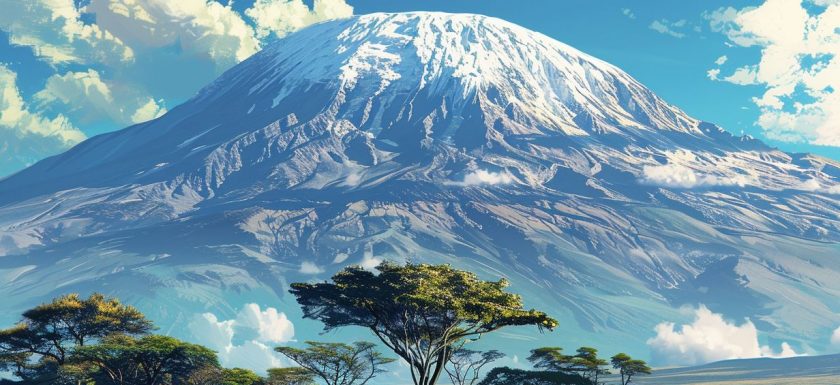
Mount Kilimanjaro, the majestic peak located in Tanzania, holds a rich history and significance that stretches back centuries. From the origin of its name to the geology of the mountain itself, there is much to explore and uncover about this iconic landmark. The first recorded ascent of Mount Kilimanjaro is shrouded in mystery, with questions surrounding who was the first to reach the summit and the challenges they faced.
The impact of colonialism on the mountain and the efforts to preserve it in modern times are also crucial aspects to consider. Join us as we delve into the cultural significance and historical journey of Mount Kilimanjaro.
Key Takeaways:
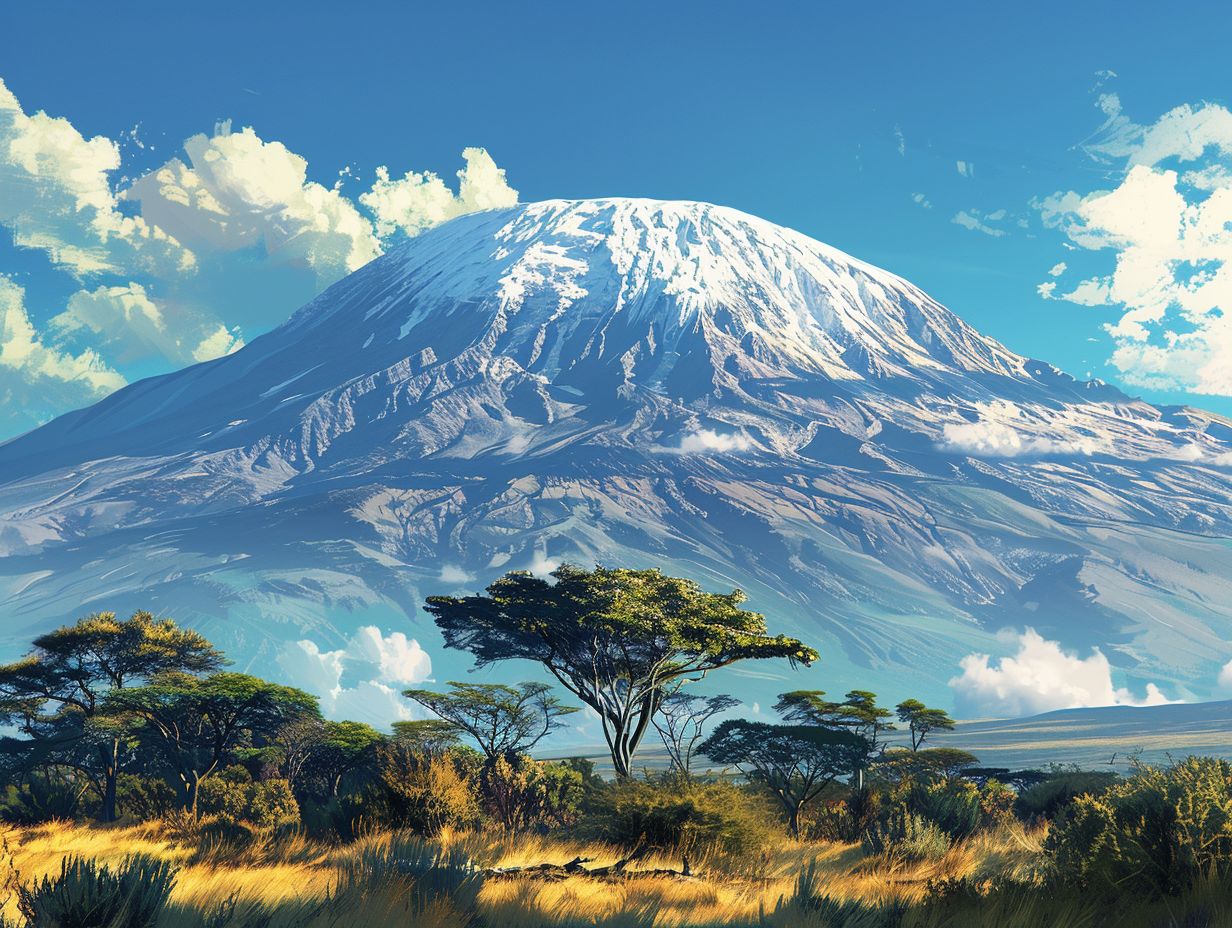
- Mount Kilimanjaro’s name has a fascinating origin, stemming from a local language and meaning “shining mountain”.
- The geology of Mount Kilimanjaro is unique, composed of three volcanic cones and various formations, making it a popular destination for geologists.
- The first recorded ascent of Mount Kilimanjaro was made in 1889 by Hans Meyer and Ludwig Purtscheller, facing challenges such as altitude sickness and difficult terrain.
The Origin of the Name ‘Kilimanjaro’
The name ‘Kilimanjaro‘ has origins in the Chagga people’s language of Tanzania, with ‘Kilima‘ meaning ‘Mountain’ and ‘Njaro‘ possibly referring to the mountain’s white summit.
These linguistic roots of the name ‘Kilimanjaro’ reflect the deep cultural significance and historical context of this iconic mountain. The Chagga people have long revered Mount Kilimanjaro as a sacred site, integral to their traditions and beliefs. The word ‘Kilima’ symbolizes the towering presence of the mountain, signifying its majesty and grandeur in the local culture.
On the other hand, the term ‘Njaro’ has sparked interpretations, with some associating it with ‘shining’ or ‘whiteness,’ mirroring the snow-capped peak that crowns Kilimanjaro. This interplay of language and landscape illustrates the intricate relationship between nature and language, shaping the mountain’s identity in the collective consciousness.
The Geology of Mount Kilimanjaro
Mount Kilimanjaro, a dormant volcano in East Africa, comprises three volcanic cones: Kibo, Mawenzi, and Shira, with its summit glaciers and unique geology making it a prominent feature in the region.
Geologically speaking, Kilimanjaro’s history dates back over a million years when volcanic activity began shaping its present form. The tallest of the volcanic cones, Kibo, stands at an impressive 19,340 feet, attracting climbers and geologists alike. Mawenzi, though older and more eroded, offers a rugged and picturesque view. Shira, the third cone, is known for its collapsed caldera, adding to the mountain’s geological intrigue.
The First Recorded Ascent of Mount Kilimanjaro
The first recorded ascent of Mount Kilimanjaro was accomplished by Hans Meyer and Ludwig Purtscheller in 1889, marking a significant milestone in the history of mountaineering and exploration in Africa.
Hans Meyer, a German geologist, and Ludwig Purtscheller, an Austrian mountaineer, embarked on a challenging journey to conquer the majestic peak of Kilimanjaro. Their expedition, filled with both physical and mental obstacles, showcased extraordinary determination and courage. Battling unpredictable weather conditions, high altitude sickness, and rugged terrains, they persevered in their quest to reach the summit.
Their successful climb not only highlighted their exceptional mountaineering skills but also contributed immensely to the geographical knowledge of the region. Meyer and Purtscheller’s achievement opened doors for future explorers and paved the way for the popularity of climbing Kilimanjaro in the years to come.
Who Was the First Person to Reach the Summit?
Hans Meyer, accompanied by Ludwig Purtscheller, holds the distinction of being the first person to reach the summit of Mount Kilimanjaro in 1889, initiating a new era in mountaineering history in Africa.
Their expedition was not without its challenges. The rugged terrain, unpredictable weather conditions, and limited resources all posed significant obstacles along their journey. Meyer and Purtscheller faced treacherous cliffs, icy slopes, and thin air as they made their daring ascent towards the peak.
Their successful summit marked a monumental achievement in mountaineering history. By conquering Kilimanjaro, they showcased the possibilities of human endurance and exploration. Their legacy continues to inspire generations of climbers to test their limits and conquer new heights in the world of mountaineering.
How Long Did It Take to Reach the Summit?
Hans Meyer and Ludwig Purtscheller’s historic ascent to the summit of Mount Kilimanjaro in 1889 took several grueling weeks, involving meticulous planning and enduring challenging conditions to reach the peak.
It is estimated that the explorers spent over three weeks navigating the treacherous terrain, battling altitude sickness, extreme weather fluctuations, and physical exhaustion, all while ascending to the highest point of Africa. The mental fortitude required to persevere through such a demanding journey cannot be overstated, with every step carefully calculated to ensure safety and success.
What Challenges Did the Climbers Face?
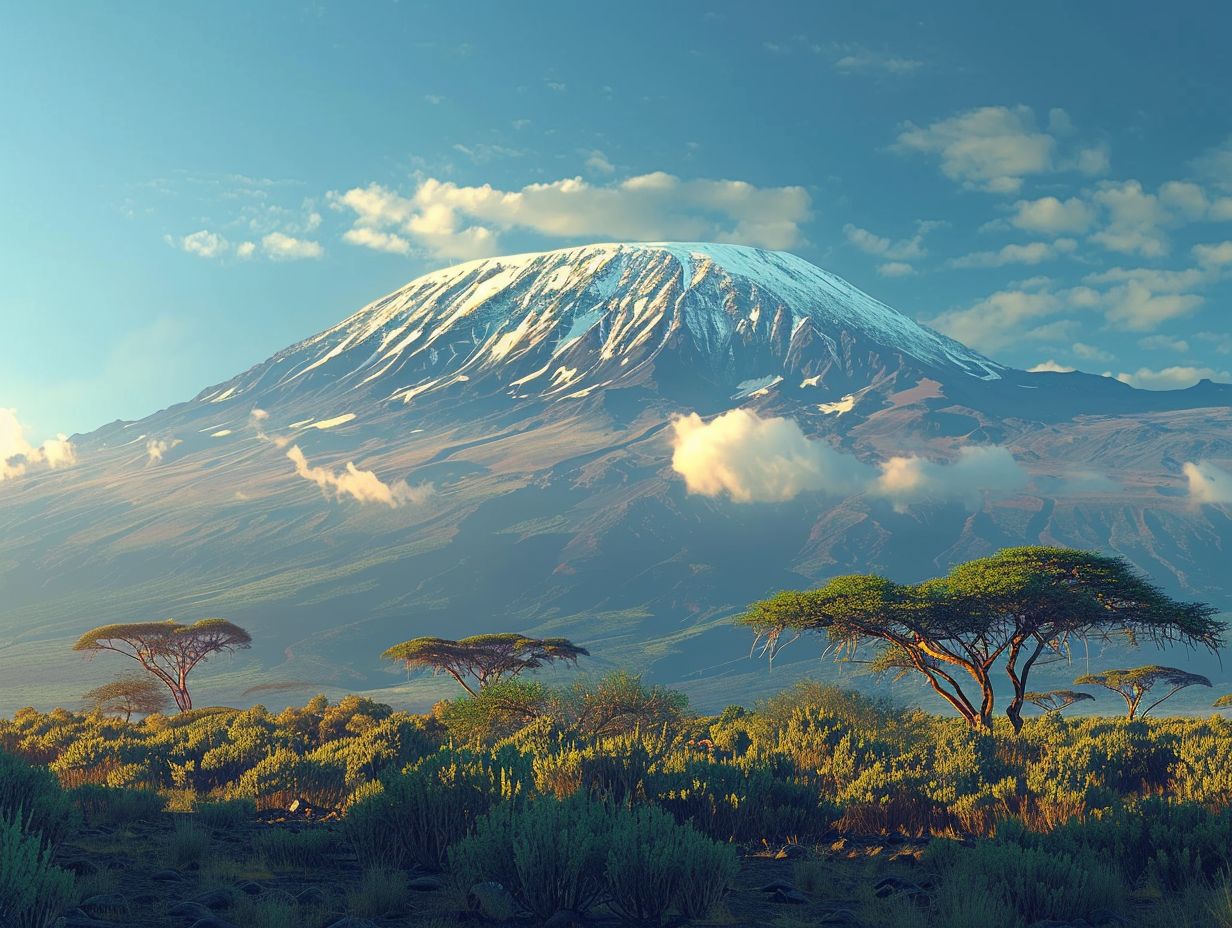
During their ascent, Hans Meyer and Ludwig Purtscheller encountered numerous challenges such as altitude sickness, extreme weather conditions, and rugged terrain, which tested their physical and mental fortitude to the limits.
Altitude sickness, also known as acute mountain sickness (AMS), posed a significant hurdle for the climbers as they ascended higher up the mountain. Symptoms of AMS include headaches, nausea, and fatigue, making it difficult for the climbers to acclimatize to the thin air.
The unpredictable weather conditions on Mount Kilimanjaro, ranging from scorching sun to freezing temperatures, added a layer of complexity to their journey. The climbers had to adapt quickly to the changing climate, ensuring they were adequately protected from the elements.
The rugged and varied terrain of Kilimanjaro presented a physical challenge, requiring careful navigation and endurance to overcome steep slopes, rocky paths, and icy patches.
The Impact of Colonialism on Mount Kilimanjaro
The period of European colonialism had a profound impact on Mount Kilimanjaro, affecting the local Chagga people, the mountain’s ecology, and the region’s cultural landscape in Tanzania.
Colonial rule brought significant changes to the traditional ways of life for the Chagga people, as their lands were often seized for plantations or infrastructure projects. This disrupted their agricultural practices and forced many to adapt to new forms of labor and trade.
The environmental alterations caused by colonial activities, such as deforestation for timber extraction and the introduction of non-native species, had long-lasting consequences on the biodiversity of the mountain.
How Did Colonialism Affect the Local People and Environment?
Colonialism on Mount Kilimanjaro led to significant changes in the lives of the local Chagga people, disrupting their traditional ways of living and land usage, while also impacting the mountain’s ecological balance and biodiversity.
The arrival of European colonial powers introduced new social structures and economic systems that altered the cultural fabric of the Chagga society. The imposition of foreign laws and governance mechanisms further eroded the autonomy of the indigenous population, leading to a loss of traditional practices and knowledge.
The exploitation of Mount Kilimanjaro’s resources for commercial gain disrupted the delicate ecological equilibrium of the region. Deforestation, mining activities, and agricultural expansion under colonial rule significantly affected the biodiversity of the area, leading to long-lasting consequences for the local flora and fauna.
What Changes Were Made to the Mountain During This Time?
The era of colonialism witnessed alterations to Mount Kilimanjaro’s landscape due to deforestation, land use changes, and introduction of non-native species, impacting the mountain’s natural balance and ecological diversity.
Deforestation during the colonial period led to the clearing of vast tracts of forests on Mount Kilimanjaro, significantly reducing the natural habitat for various plant and animal species.
The land use changes introduced by colonial powers further exacerbated the environmental impact, as traditional farming and grazing practices were altered to suit colonial economic interests.
The introduction of non-native species, such as invasive plants and animals, disrupted the native ecosystem of Kilimanjaro, outcompeting local flora and fauna for resources. These changes not only affected the delicate balance of the mountain’s biodiversity but also had lasting consequences on the region’s ecological stability.
Mount Kilimanjaro in Modern Times
In contemporary times, Mount Kilimanjaro attracts a plethora of tourists, mountaineers, and adventurers, with expeditions, record-setting feats, and conservation efforts shaping its significance in the modern world.
Mount Kilimanjaro, known as the ‘Roof of Africa,’ stands majestically in Tanzania, drawing people from all corners of the globe. The allure of conquering its snow-capped summit, Uhuru Peak, at 19,341 feet, fuels a sense of adventure and accomplishment.
Over the years, numerous individuals have set remarkable records on the mountain, adding to its lore and attracting more thrill-seekers. The increased emphasis on sustainable travel practices and environmental preservation has led to various conservation initiatives to protect the unique flora and fauna found along the diverse ecosystems of Kilimanjaro.
How Has Tourism Affected Mount Kilimanjaro?
The influx of tourism on Mount Kilimanjaro has brought economic opportunities to Tanzania but also raised concerns about environmental conservation, cultural preservation, and sustainable management practices on the mountain.
With more visitors coming to experience the breathtaking beauty and challenge of climbing Africa’s highest peak, local businesses have flourished, creating jobs and stimulating the economy. This surge in tourism has prompted worries about the impact on Mount Kilimanjaro’s delicate ecosystem, including deforestation, waste disposal, and disruption of wildlife habitats.
There are concerns about the authenticity of indigenous cultures being eroded as commercialization and cultural commodification become increasingly prevalent. Balancing the economic benefits of tourism with the need to protect the environment, respect local traditions, and promote sustainable tourism practices is a pressing issue for the region.
What Measures Have Been Taken to Preserve the Mountain?
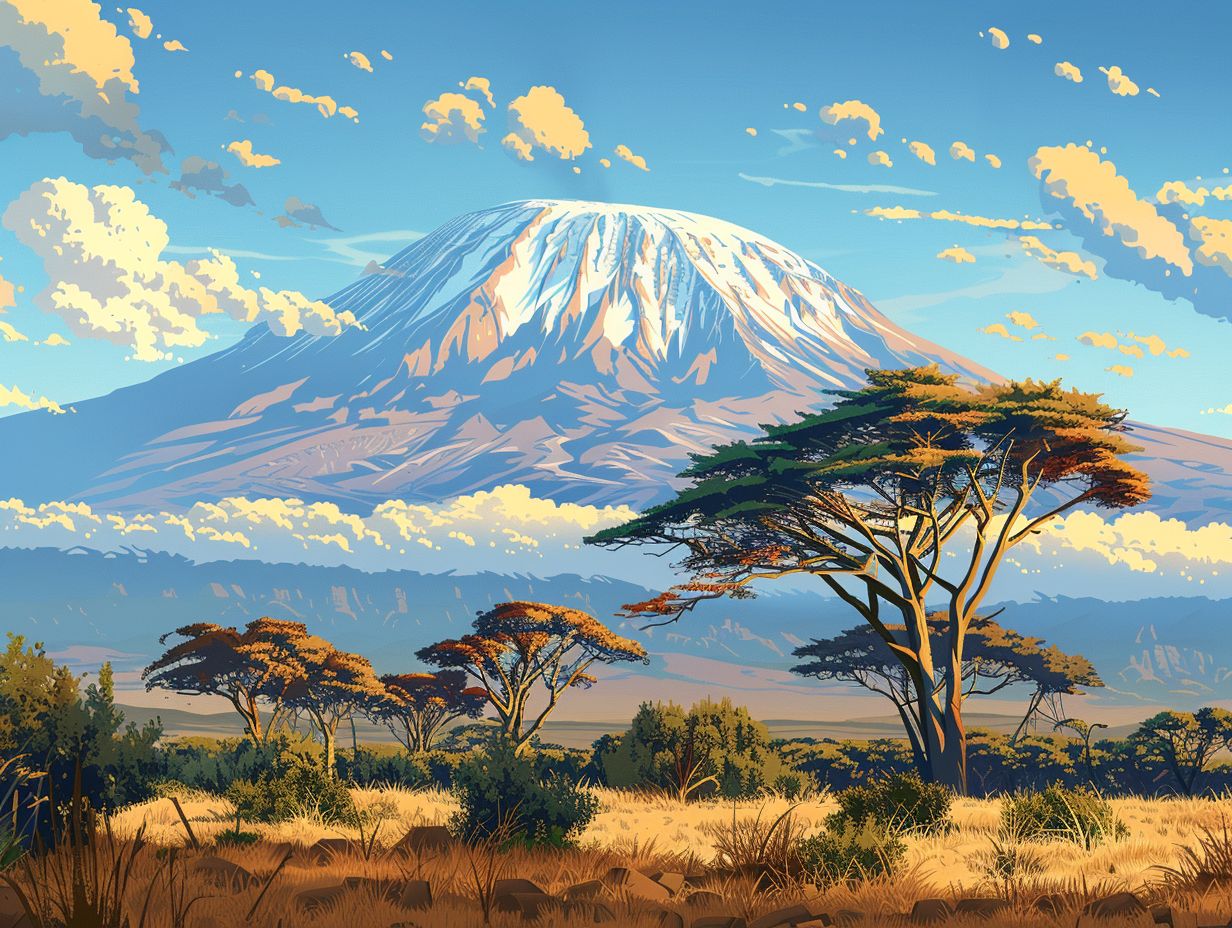
Conservation initiatives and UNESCO recognition have played a vital role in preserving the ecological integrity and cultural heritage of Mount Kilimanjaro, ensuring sustainable management and protection of the mountain’s resources.
UNESCO’s involvement in safeguarding Mount Kilimanjaro’s natural and cultural values has been crucial in promoting awareness and implementing conservation measures.
By designating Mount Kilimanjaro as a UNESCO World Heritage Site, the organization has highlighted the significance of this iconic mountain and its surrounding ecosystems.
The emphasis on sustainable practices in managing the mountain has led to the adoption of eco-friendly approaches, such as waste management systems and biodiversity protection strategies.
Community engagement plays a key role in ensuring the long-term sustainability of Mount Kilimanjaro, with local residents actively participating in conservation efforts and eco-tourism initiatives.
What Records and Achievements Have Been Made on Mount Kilimanjaro in Recent Years?
Recent years have witnessed remarkable achievements on Mount Kilimanjaro, including speed ascents, environmental campaigns, and scientific research expeditions, showcasing the mountain’s continuing allure and potential for exploration.
Among the notable accomplishments, speed ascent records have been broken by skilled mountaineers who have pushed the limits of human endurance and skill.
Conservation efforts on the mountain have seen new heights with initiatives to preserve the fragile ecosystem and protect endangered species.
Research expeditions have unveiled new insights into the mountain’s biodiversity, climate change impacts, and geological history, contributing to global scientific knowledge.
The Cultural Significance of Mount Kilimanjaro
Mount Kilimanjaro holds immense cultural significance for the local tribes of Tanzania, with the Chagga people venerating the mountain as a sacred site intertwined with their traditions, beliefs, and historical identity.
For the Chagga people, this majestic peak is not merely a physical landmark but a spiritual anchor that has guided their way of life for generations. Every ritual and ceremony among the Chagga community resonates with the symbolic presence of Kilimanjaro, reflecting their deep-rooted connection with the land and its mystical energies.
The mountain is not only a geographical wonder but a living entity for the Chagga, embodying the spirits of their ancestors and serving as a beacon of wisdom and protection.
Traditional practices such as sacrifices and offerings are performed at specific sites on the mountain to honor their heritage and seek blessings for the community’s well-being.
Through storytelling and songs passed down through oral tradition, the Chagga people weave the narratives of Kilimanjaro’s creation and significance into their daily lives, preserving their cultural heritage and tribal customs for future generations.
What Is the Importance of Mount Kilimanjaro to the Local People?
Mount Kilimanjaro holds deep significance for the local tribes, symbolizing spiritual beliefs, cultural heritage, and ancestral connections that are integral to their identity and historical narratives in Tanzania.
For the Chagga people, who inhabit the slopes of this majestic mountain, Kilimanjaro is not just a geographical marvel but a sacred entity intertwined with their traditions and daily life. The resilient bond between the indigenous communities and the mountain is evident in their rituals, where offerings and ceremonies are conducted to honor the spirits believed to reside within its rocky heights.
Generations have passed down stories of bravery and resilience associated with Kilimanjaro, shaping the collective consciousness of the tribes and reinforcing the mountain’s place in their folklore and customs.
What Are Some Cultural Traditions and Beliefs Surrounding the Mountain?
The cultural traditions and beliefs surrounding Mount Kilimanjaro are rooted in the spiritual practices, folklore, and oral histories of the local tribes, illustrating a deep connection between the mountain, nature, and the community’s collective identity.
Within these narratives, Mount Kilimanjaro often serves as a sacred site where spiritual rituals are performed to honor ancestors or seek blessings for a fruitful harvest. The indigenous communities imbue the mountain with mystical qualities, believing it to be a bridge between the earthly realm and the divine.
Ceremonial practices, such as offerings and prayers, are conducted at specific locations on the mountain, marking important life events and seasonal transitions in accordance with age-old traditions. These rites reinforce the spiritual bond between the people and the majestic mountain.
Frequently Asked Questions
What is the history of Mount Kilimanjaro?
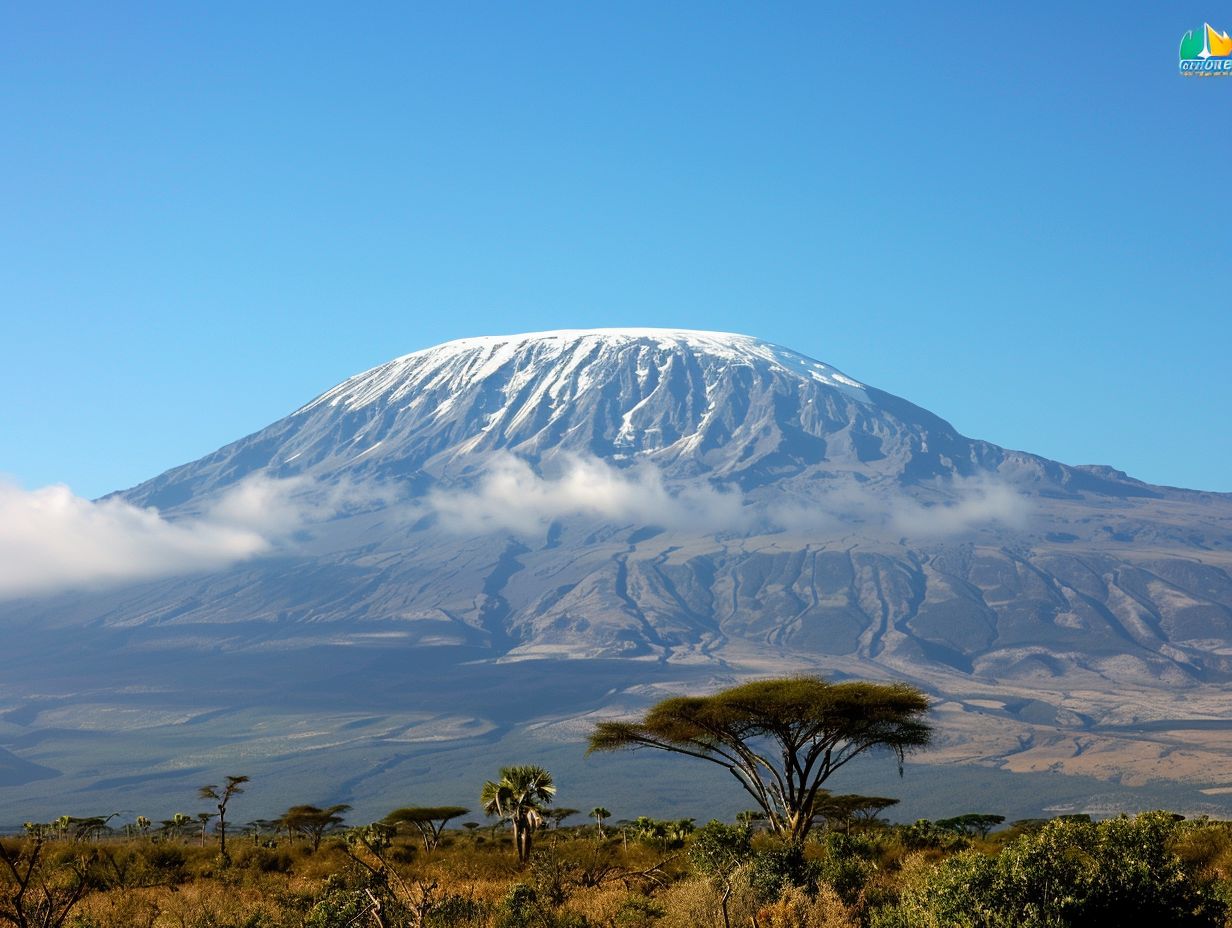
Mount Kilimanjaro is a dormant volcano located in Tanzania, Africa. It is the tallest mountain in Africa with a height of 19,341 feet. It has a rich and fascinating history that dates back thousands of years.
Who were the first people to climb Mount Kilimanjaro?
The first recorded ascent of Mount Kilimanjaro was in 1889 by Hans Meyer, Ludwig Purtscheller, and a local guide named Yohani Kinyala Lauwo. However, it is believed that local Chagga and Maasai tribes had been climbing the mountain for centuries before that.
What is the cultural significance of Mount Kilimanjaro?
Mount Kilimanjaro is a sacred mountain for the Chagga and Maasai tribes who live in the surrounding areas. It is also considered a holy site for various religious and spiritual groups and is often used for rituals, ceremonies, and pilgrimages.
How did Mount Kilimanjaro get its name?
The name “Kilimanjaro” is said to come from the Swahili word “Kilima” meaning “mountain” and the Chagga word “Njaro” meaning “whiteness.” This refers to the snow-capped peak of the mountain, which has inspired many poems, songs, and legends.
What is the geological history of Mount Kilimanjaro?
Mount Kilimanjaro is a stratovolcano that was formed around one million years ago. It is made up of three volcanic cones: Kibo, Mawenzi, and Shira. The last major eruption occurred over 360,000 years ago, and the mountain is now considered dormant.
What are some famous expeditions and records associated with Mount Kilimanjaro?
In addition to being a popular tourist destination, Mount Kilimanjaro has been the site of many notable expeditions and records. In 1995, 86-year-old Angela Vorobeva became the oldest person to reach the summit. In 2014, Kyle Maynard, a quadruple amputee, reached the summit on his hands and feet. And in 2018, Swiss climber Karl Egloff set the record for the fastest ascent and descent in 6 hours and 42 minutes.